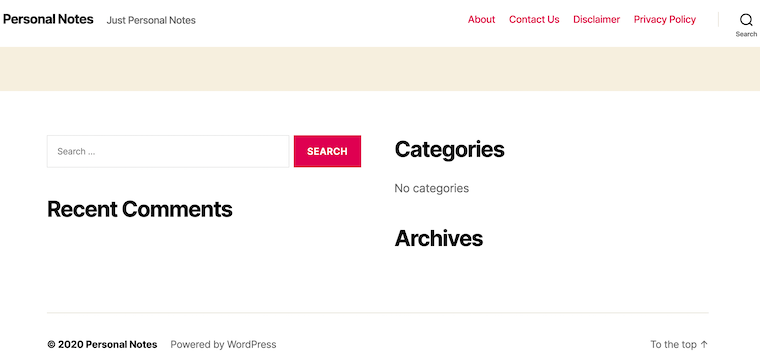How To Install WordPress on Linux Mint 20

In this tutorial, we will show you how to install WordPress on Linux Mint 20. For those of you who didn’t know, WordPress is an online, open-source website creation tool written in PHP. But in non-geek speak, it’s probably the easiest and most powerful blogging and website content management system (or CMS) in existence today. WordPress has a lot of plugins and themes to choose from, that another reason why it is famous in this area.
This article assumes you have at least basic knowledge of Linux, know how to use the shell, and most importantly, you host your site on your own VPS. The installation is quite simple and assumes you are running in the root account, if not you may need to add ‘sudo‘ to the commands to get root privileges. I will show you through the step-by-step installation of WordPress blogs on a Linux Mint 20 (Ulyana).
Prerequisites
- A server running one of the following operating systems: Linux Mint 20 (Ulyana).
- It’s recommended that you use a fresh OS install to prevent any potential issues.
- A
non-root sudo useror access to theroot user. We recommend acting as anon-root sudo user, however, as you can harm your system if you’re not careful when acting as the root.
Install WordPress on Linux Mint 20 Ulyana
Step 1. Before running the tutorial below, it’s important to make sure your system is up to date by running the following apt commands in the terminal:
sudo apt update
Step 2. Installing a LAMP server.
A Linux Mint LAMP server is required. If you do not have LAMP installed, you can follow our guide here.
Step 3. Installing WordPress on Linux Mint 20.
Now we go to the WordPress official website to download the source code:
wget http://wordpress.org/latest.zip
Next, extract the WordPress archive to the document root directory on your server:
unzip -q latest.zip -d /var/www/html/ cd wordpress cp -a * ..
We will need to change some folders permissions:
chown www-data:www-data -R /var/www/html/
Step 4. Configuring MariaDB for WordPress.
By default, MariaDB is not hardened. You can secure MariaDB using the mysql_secure_installation script. you should read and below each step carefully which will set a root password, remove anonymous users, disallow remote root login, and remove the test database and access to secure MariaDB:
mysql_secure_installation
Configure it like this:
- Set root password? [Y/n] y - Remove anonymous users? [Y/n] y - Disallow root login remotely? [Y/n] y - Remove test database and access to it? [Y/n] y - Reload privilege tables now? [Y/n] y
Next, we will need to log in to the MariaDB console and create a database for WordPress. Run the following command:
mysql -u root -p
This will prompt you for a password, so enter your MariaDB root password and hit Enter. Once you are logged in to your database server you need to create a database for WordPress installation:
CREATE DATABASE WP_database; CREATE USER ‘wp_user’@’localhost’ IDENTIFIED BY ‘mypassword’; GRANT ALL ON WP_database.* TO ‘wp_user’@'localhost’ IDENTIFIED BY ‘your-password’ WITH GRANT OPTION; FLUSH PRIVILEGES; EXIT
Step 5. Configuring WordPress.
WordPress stores its configuration, such as database, on file wp-config.php and you need to run the commands as shown to create this file:
mv wp-config-sample.php wp-config.php nano wp-config.php
Add the following line:
define(‘DB_NAME’, ‘WP_database’); define(DB_USER’, ‘wp_user’); define(DB_PASSWORD’, ‘your-password’);
Step 6. Configure Apache for WordPress.
Create a new virtual host directive in Apache. For example, create a new Apache configuration file named ‘wordpress.conf’ on your virtual server:
touch /etc/apache2/sites-available/wordpress.conf ln -s /etc/apache2/sites-available/wordpress.conf /etc/apache2/sites-enabled/wordpress.conf nano /etc/apache2/sites-available/wordpress.conf
Add the following lines:
<VirtualHost *:80> ServerAdmin admin@yourdomain.com DocumentRoot /var/www/html/ ServerName your-domain.com ServerAlias www.your-domain.com <Directory /var/www/html/> Options FollowSymLinks AllowOverride All Order allow,deny allow from all </Directory> ErrorLog /var/log/apache2/your-domain.com-error_log CustomLog /var/log/apache2/your-domain.com-access_log common </VirtualHost>
Then, we can restart the Apache webserver so that the changes take place:
sudo a2ensite wordpress.conf sudo a2enmod rewrite sudo systemctl restart apache2.service
Step 7. Configure Firewall.
Run the following command to open HTTP and HTTPS ports:
sudo ufw allow 'Apache Full'
Step 8. Accessing a WordPress Site.
WordPress will be available on HTTP port 80 by default. Open your favorite browser and navigate to http://your-domain.com or http://your-ip-address/ and complete the required steps to finish the installation. If everything was properly installed, you should get a page as shown:

Congratulations! You have successfully installed WordPress. Thanks for using this tutorial for installing the latest version of WordPress on the Linux Mint system. For additional help or useful information, we recommend you to check the official WordPress website.